Plant communities
The plant communities on the islands are unique.
Firstly, for centuries they have been exposed to minimal human influence. There has been no fertilising or ploughing, never mind spraying. The only exception to this is Eskilsø, where corn and one or two other crops have been cultivated on the higher part. These crops are no longer grown there.
Secondly, the islands are among the areas currently least exposed to the impact of nitrogen and phosphorous, which affect large parts of Denmark, and which damage the plant communities in many places. There is still no fertilising, ploughing or spraying on the islands, but they are affected by airborne pollution just as much as the rest of the country. The island plant communities are therefore one of the best references we have for botanical impoverishment in other areas. However, if airborne pollution continues to increase there is a risk that these unique plant communities will also be destroyed.
Although the little islands in the fjord are very similar, they have a widely varied range of plant communities.
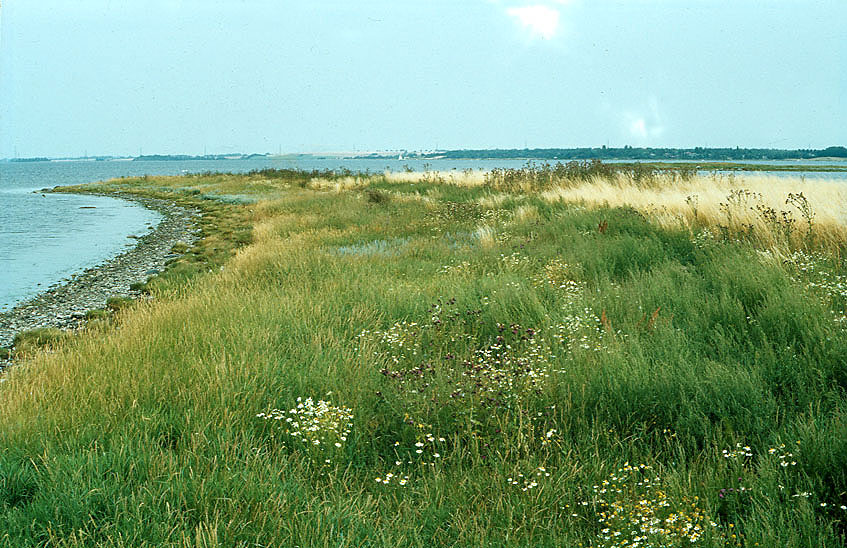
Typical plant zones on Yderste Holm.
Where there is an evenly sloping coast which is exposed to the wind – as on the western side of Yderste Holm – there is a typical beach zone with saltmarsh grass and scurvygrass nearest the water, then the strandline with sea wormwood and orache, followed by saltmarsh rush beds or coastal grassland.
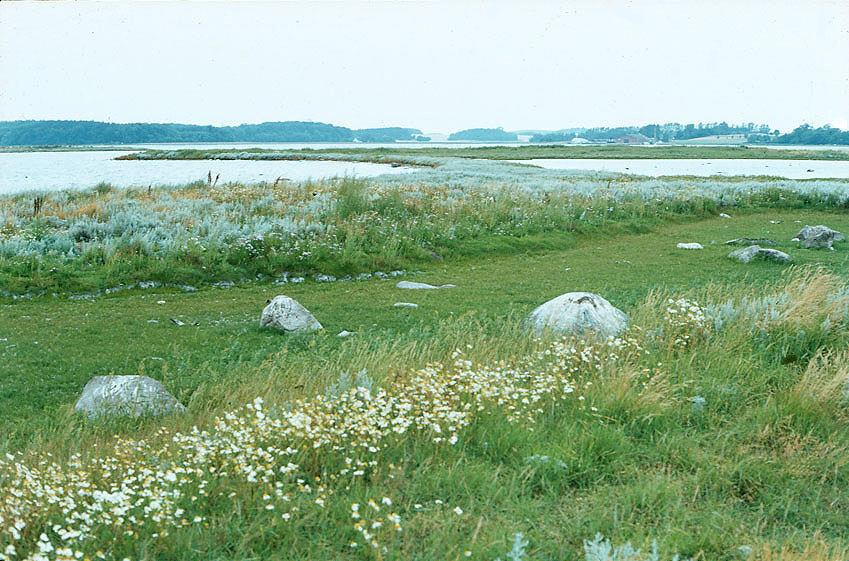
Salt pans on Flængholm, which is a ring-shaped island.
Some of the islands, such as Flængholm, have natural salt pans. These are filled with salt water during storms and this water subsequently evaporates, leaving behind very saline soil. Here there are salt-tolerant species such as glasswort and orache.
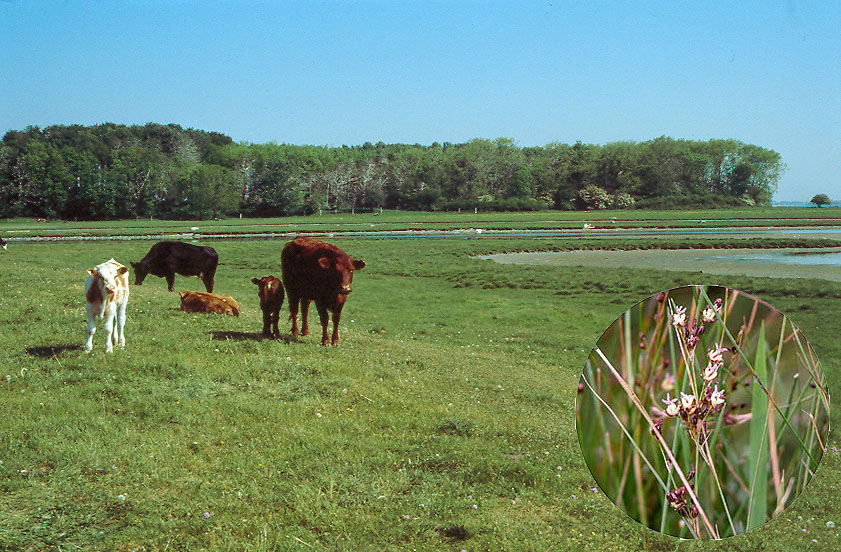
Saltmarsh rush meadow on hesteholmene with the cormorant colony in the background. Inset - saltmarsh rush.
Saltmarsh rush meadows, which often have tussocky grass in a network of little pools which are filled at high water, are most typical of the grazed islands, such as Eskilsø, Øksneholm and Lilleø. Many of the plants that reproduce using seeds are eaten by animals before they are able to disperse their seed, and so it is the grasses and other species that spread vegetatively, for example by means of suckers, which win out. The vegetation is often so dense that it prevents germination of any seeds that might fall there.
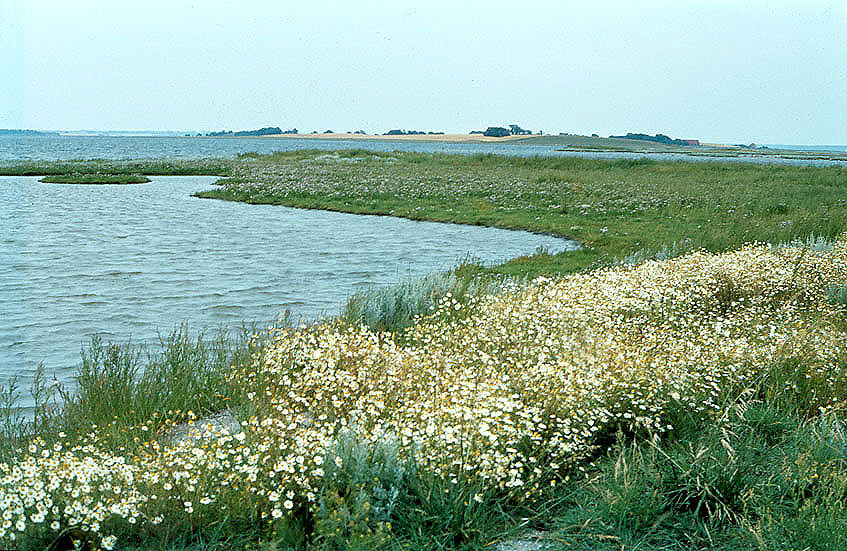
Scentless mayweed, sea asters etc on Flængholm. Eskilsø in the background.
On the ungrazed islands there are often large populations of sea asters, orache and scentless mayweed, as for example on Flængholm.
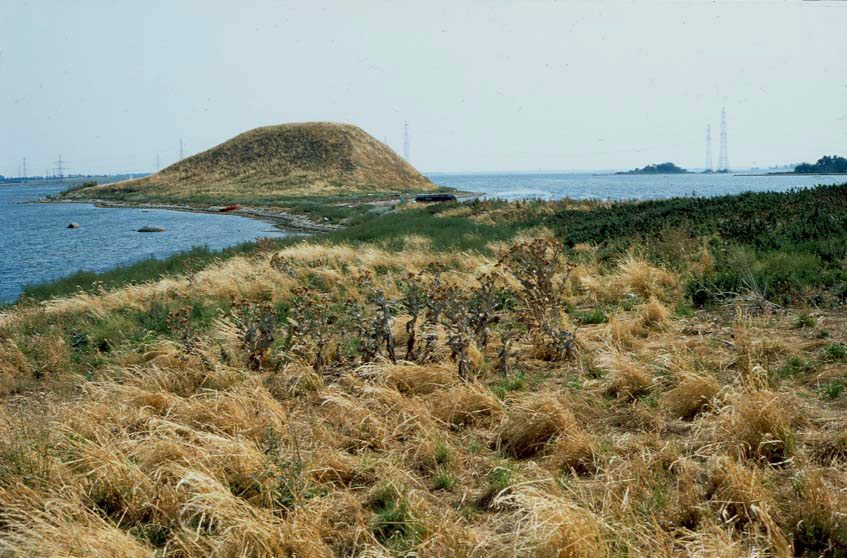
Kølholm from the northern end, dominated by nitrogen-loving plants.
The coastal grasslands in the higher and drier areas are also highly dependent on whether or not they are grazed. Where there is no grazing, for example on Kølholm and Langholm in Lejre Vig, they are covered with dense vegetation of species such as false oat-grass and stinging nettles.
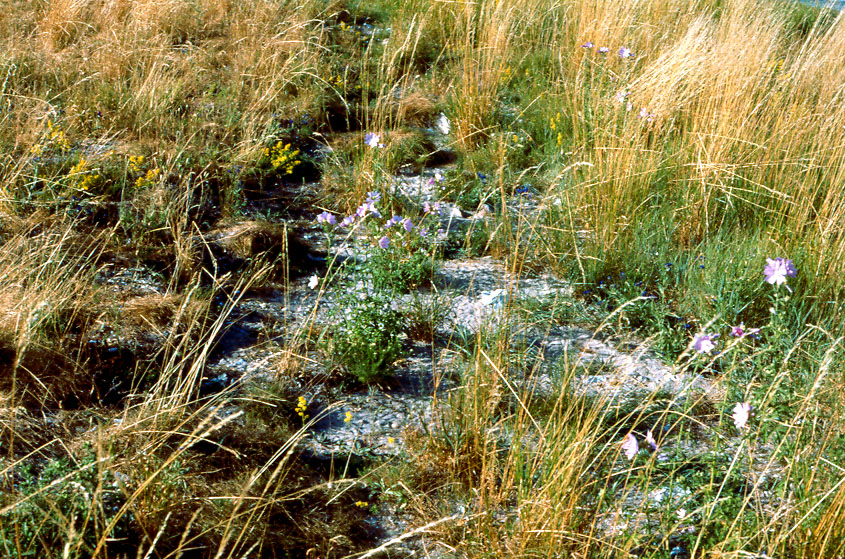
Annuals and biennials germinate in soil excavated by water voles.
But if there are water voles, as on Langholm in Lejre Vig, the earth they dig up forms seed beds, where a range of annual and biennial species like common mallow and greater musk-malllow can germinate.
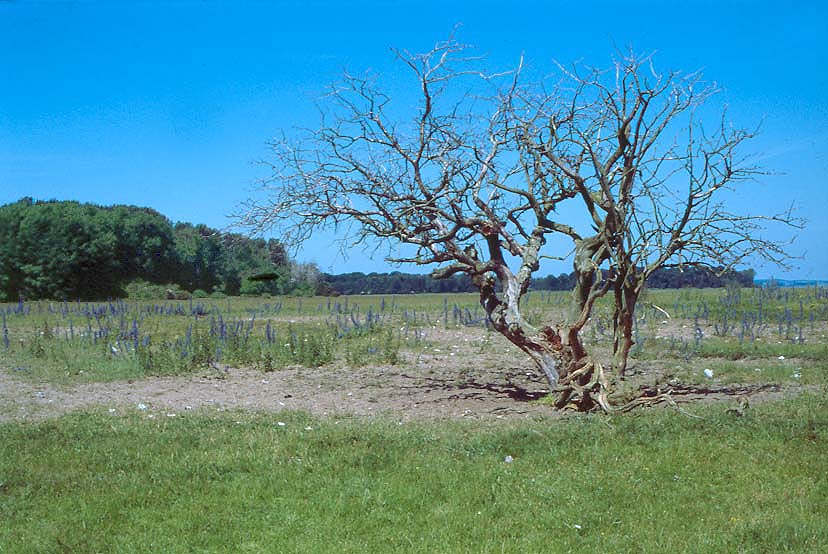
Grassland with bugloss at Askehoved.
If the grasslands are grazed , as on Eskilsø, Øksneholm and Lilleø, then the grasses will still win out, but there are some perennials which the animals do not touch, e.g. echium and bugloss. There can be extensive and lovely beds of both of these.
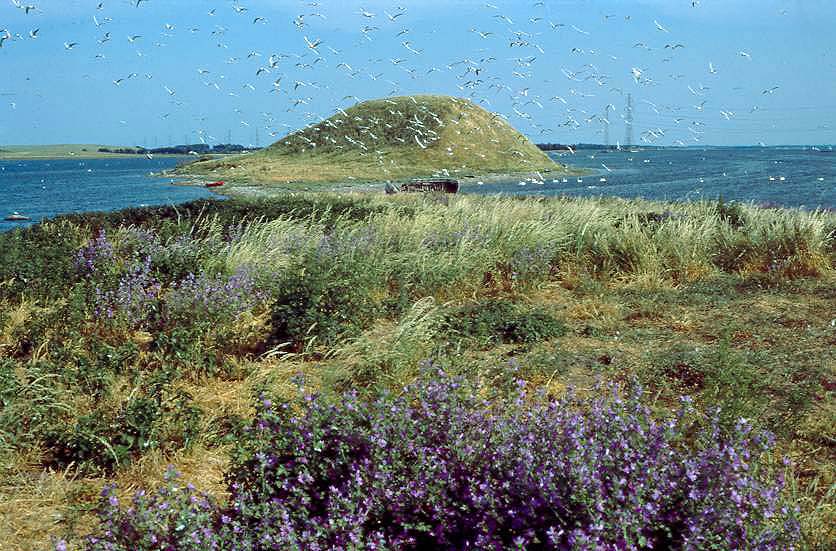
There is abundant fertiliser in gull colonies.
In the bird colonies, bird droppings add large quantities of fertiliser to the soil. Especially in the higher lying colonies, like Kølholm, where there is less leaching, this fertiliser can give large beds of common mallow, stinging nettle etc., whilst lower lying damp areas, as on Flængholm, are dominated by sea aster, orache and sea wormwood.
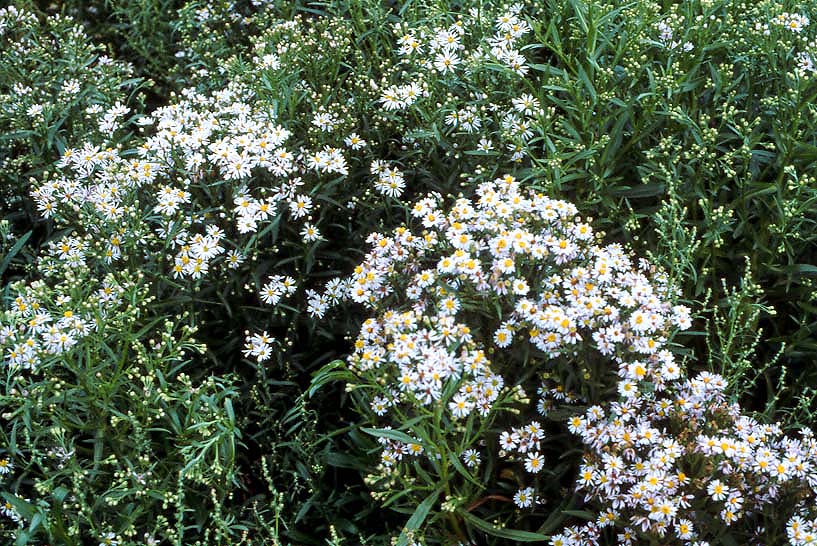
Sea asters thrive where the gulls fertilise.
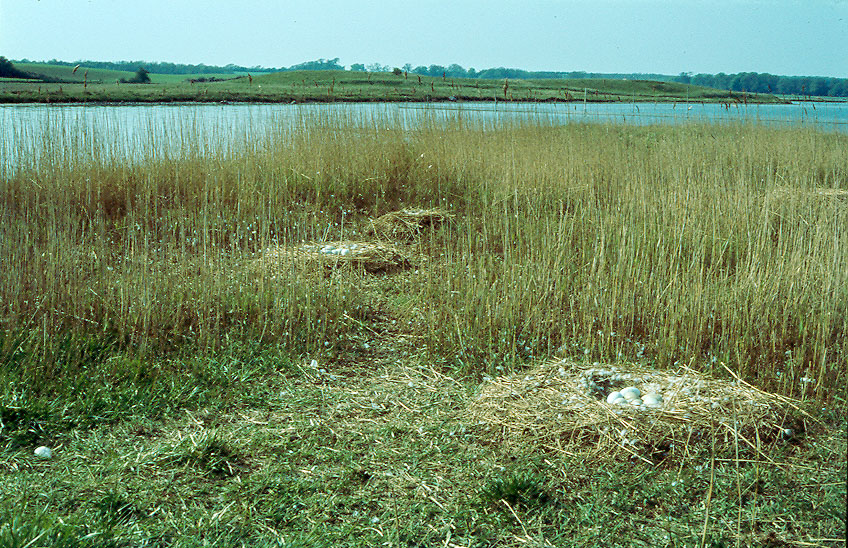
Reeds are found only in the fjord’s innermost inlets – here on Sivholm.
In still, brackish areas with a soft bed, like Skovholmene and Sivholm there are reed marshes, with the common reed as almost the only species.
